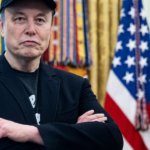“We were going to be rejecting the fast food of the previous generation,” Neman told NYT.
“People are paying not only for the quality of the taste in the food, but the fact that it’s made by hand, the fact that we pay our farmers and our team members fairly,” Neman told NYT.
Sweetgreen didn’t immediately respond to Fortune’s request for additional comment.
Another major cost for Sweetgreen has been investing in technology to power its pickup services, deliveries, and AI to provide suggestions to customers and maintain its loyalty program.
“Our path to profitability on a net income basis comes from a few levers,” Neman told WSJ. “The first is continuing to grow our footprint. Second is growing sales in existing stores. The third is being very disciplined on our cost structure to make sure the incremental profit we’re making is flowing through the bottom line.”









